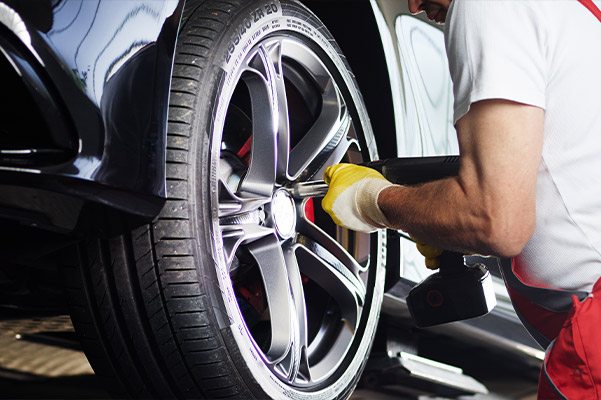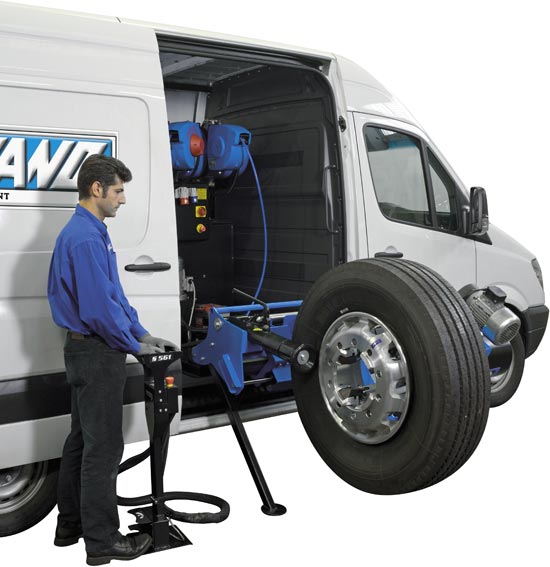Morris Tires: Your Partner for Professional GMC Tires Service
Morris Tires: Your Partner for Professional GMC Tires Service
Blog Article
Tire Solution: The Impact of Weather
When it comes to ensuring ideal efficiency and safety and security on the road, recognizing the effect of climate conditions on tire solution is crucial. GMC Tire Service. In this discussion, we will certainly explore the complex partnership between weather condition problems and tire service, dropping light on the importance of weather-specific tire maintenance techniques and considerations.
Warm and Tire Performance
When revealed to heats, tires experience adjustments in performance that can dramatically affect car safety and handling. The warmth produced from long term driving or warm weather problems triggers the tire rubber to soften, bring about reduced step life and raised wear. As the rubber comes to be softer, the tire's hold on the roadway decreases, impacting stopping distances and overall traction. In extreme situations, excessive warm can also cause tire blowouts, presenting a severe security danger to the lorry and its occupants.

Cold Climate Impacts
Cold climate problems can have a substantial effect on tire efficiency and security. In chilly weather, tires might also lose air stress extra swiftly, which can impact managing and gas efficiency.
To alleviate the results of winter on tires, it is important to consistently examine tire pressure and inflate them to the supplier's recommended degrees. Making use of wintertime or all-season tires created for cool weather condition conditions can additionally enhance traction and grasp on icy or snowy roadways. Appropriate tire upkeep, including regular examinations for wear and damages, becomes a lot more critical during cooler months to guarantee optimal performance and safety.
Rainy Conditions Effect
Throughout rainy problems, tire efficiency and safety and security can be significantly influenced by the wet roadway surfaces and minimized exposure. The step pattern of tires plays a critical function in maintaining grip on wet roads. Tires with damaged treads are extra prone to hydroplaning, where a layer of water develops between the road and the tire surface area, resulting in loss of traction. To battle this, motorists need to frequently check their tires for appropriate walk depth and think about spending in tires other particularly developed for damp conditions.
In addition, stormy weather condition can likewise reduce presence, making it testing for chauffeurs to see the roadway ahead clearly (GMC Tire Service). In such conditions, it is important to change driving rates appropriately and keep a risk-free following distance to enable unexpected quits. Appropriately filled with air tires can likewise aid in preserving control on damp roads by giving much better handling and grip
Snow and Tire Safety
Snow-covered roadways pose one-of-a-kind challenges for vehicle drivers, emphasizing the importance of proper tire choice and maintenance. When driving in snowy conditions, having the right tires can make a substantial difference in safety and efficiency. Winter months tires are created with unique rubber compounds and walk patterns to provide far better traction on snow and ice compared to all-season tires. The much deeper footsteps and sipes of wintertime tires aid grasp the roadway much better, decreasing the risk of moving and slipping.

It is essential to comply with manufacturer directions when installing and making use of tire chains to avoid damages to the tires and lorry. By choosing the best tires, preserving correct rising cost of living, and taking into consideration additional traction help like tire chains, motorists can improve their safety and security when browsing snow-covered roads.
Weather-Related Tire Maintenance
When confronted with various weather, appropriate tire maintenance comes to be an important element of automobile safety and security and efficiency. Weather-related tire maintenance incorporates a variety of techniques targeted at making certain ideal tire feature and long life in various climate scenarios. One vital facet of weather-related tire upkeep is tire pressure policy. Fluctuating temperatures can trigger tire stress to vary, impacting traction and gas efficiency. On a regular basis examining and readjusting tire pressure according to producer suggestions is necessary for secure driving in changing weather problems. In addition, tire tread depth plays a substantial duty in dealing with various climate components. Tires with adequate tread deepness give better grip on damp or icy roads, reducing the risk of skidding or hydroplaning. Inspecting tire step consistently and changing tires when step wear reaches a certain deepness is essential for keeping grip and security in damaging climate. By prioritizing weather-related tire maintenance, drivers can enhance security, improve vehicle performance, and lengthen the life-span of useful reference their tires.
Conclusion
In verdict, weather conditions have a considerable effect on tire efficiency and safety. From heat affecting tire pressure and put on to cool weather decreasing grip, it is crucial to consider the weather condition when maintaining and using tires.
In this discussion, we will explore the complex partnership in between climate problems and tire solution, shedding light on the Check This Out significance of weather-specific tire upkeep practices and considerations.

Report this page